Record of the regular press conference in August
On August 30, the Ministry of Ecology and Environment held a regular press conference in August. Huang Xiaozhan, Director of the Water Ecology and Environment Department of the Ministry of Ecology and Environment, attended the press conference and introduced the protection and construction of beautiful rivers and lakes. Pei Xiaofei, director of the Propaganda and Education Department of the Ministry of Ecology and Environment and spokesperson, presided over the press conference to inform the recent progress of key ecological and environmental protection work, and jointly answered questions from reporters.
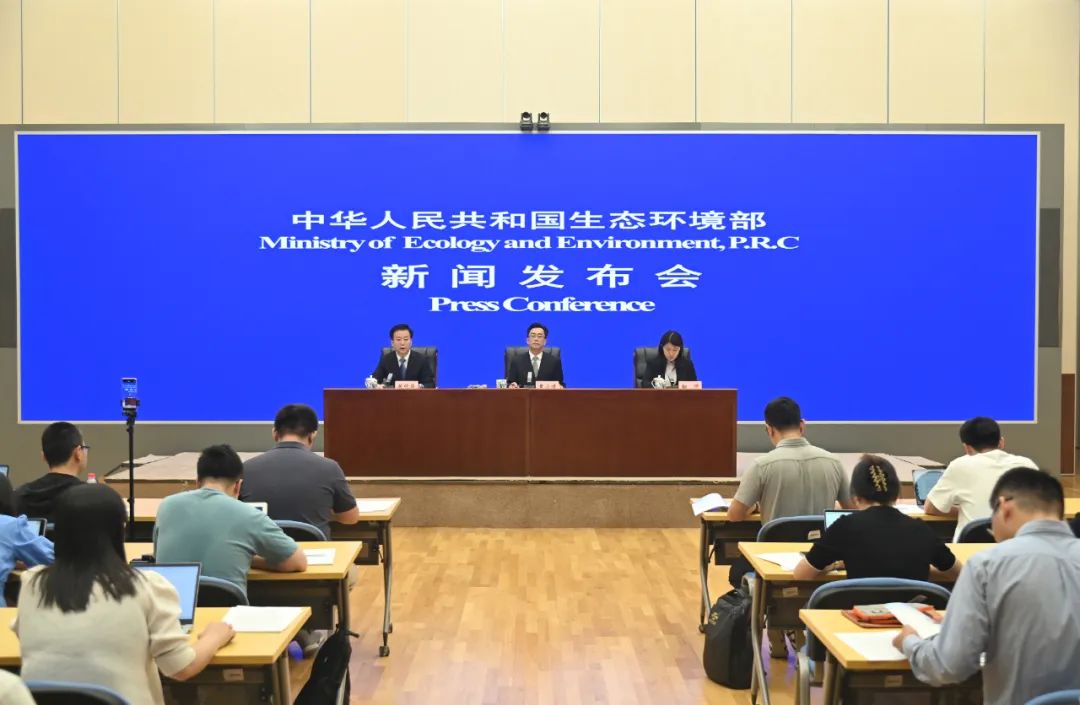
press conference site
Introduce the protection and construction of beautiful rivers and lakes
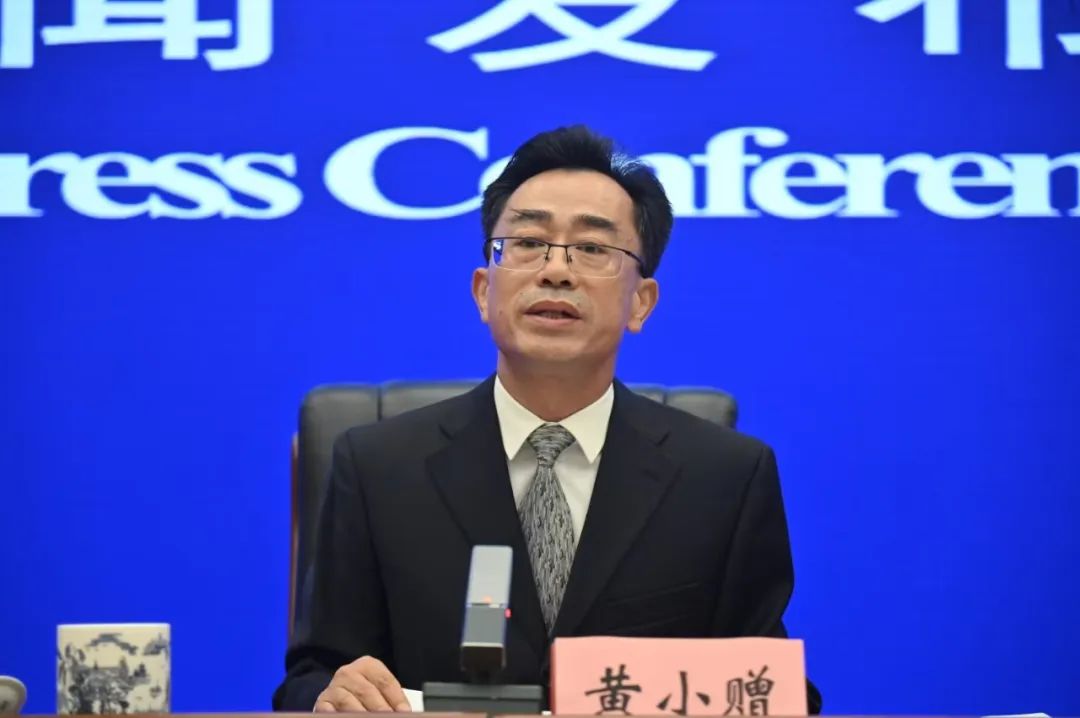
Huang Xiaozeng, Director of the Water Ecology and Environment Department of the Ministry of Ecology and Environment
Huang Xiaozhe: Good morning, everyone! For a long time, you have always cared about, supported, actively participated in water ecological and environmental protection, and made valuable contributions. I would like to take this opportunity to express my high respect and heartfelt thanks to you! I am very happy to have the opportunity to communicate with you on the theme of "Protection and Construction of Beautiful Rivers and Lakes".
2024 is a critical year for achieving the goals and tasks of the "14th Five-Year Plan" and an important year for comprehensively promoting the construction of a beautiful China. The Third Plenary Session of the 20th Central Committee of the Communist Party of China reviewed and approved the "Decision of the Central Committee of the Communist Party of China on Further Comprehensively Deepening Reforms and Promoting Chinese-Style Modernization", making major arrangements for deepening the reform of the ecological civilization system.
All localities and departments have thoroughly studied and implemented the spirit of the 20th National Congress of the Communist Party of China, the Third Plenary Session of the 20th Central Committee of the Communist Party of China and the National Ecological and Environmental Protection Conference, firmly implemented Xi Jinping's Thought on Ecological Civilization, coordinated water resources, water environment, and water ecological management, and the quality of the water ecological environment continues to be good. With the people's sense of gain has been significantly enhanced, and water ecological and environmental protection has achieved new and obvious results.
First, we will continue to fight in depth to defend clear water and promote the protection and management of major rivers and important lakes. In-depth implementation of the protection and restoration of the Yangtze River and the ecological protection and management of the Yellow River. Promote the implementation of the Yangtze River Protection Law and the Yellow River Protection Law. Accelerate the establishment of a water ecological assessment mechanism in the Yangtze River Basin, issue implementation scoring rules, organize water ecological monitoring and evaluation, and realize the transformation from qualitative description to quantitative evaluation. We fully support and cooperate with the central committees of democratic parties and non-party personages to carry out democratic supervision of the Yangtze River ecological and environmental protection, and form a strong joint force to jointly grasp large-scale protection. Implement water pollution control in the Yangtze River Economic Belt and industrial parks along the Yellow River, and promote the resolution of more than 1600 outstanding problems.
A notice on strengthening environmental protection work for the remediation of black and odorous water bodies was issued, and 98.4% of the remediation of black and odorous water bodies in cities at prefecture level and above have been completed. Adhere to bottom-line thinking, issue notices on water environment supervision during flood seasons, focus on key areas, industries, and enterprises, accurately identify various hidden dangers of water environment risks, carry out traceability rectification, and promptly and properly handle environmental emergencies. "One lake, one policy" strengthens the prevention and control of water blooms and promotes the ecological restoration of key lakes and reservoirs. Strengthen the environmental protection of drinking water source areas. A total of 24,000 centralized drinking water source areas at the township level and above across the country have completed the delineation of protected areas, further improving the level of drinking water safety.
The second is to improve the water ecological and environmental governance system and strengthen systematic governance, source governance, and comprehensive governance. Issued and implemented water ecological and environmental protection plans for key river basins, and built a new pattern of "coordinating three waters" governance. Improve the fixed pollution source supervision system with the emission permit system as the core, issue the "Emission Permit Management Measures", and include a total of 3.757 million fixed pollution sources under management. We will further promote the investigation and traceability of sewage outlets into rivers, use points to lead lines, and use lines to promote areas, forcing comprehensive rectification of various pollution sources in urban and rural areas on the shore.
We issued a list for the protection and construction of beautiful rivers and lakes at the national level, and identified 2573 water body protection and construction tasks. A total of two batches of 56 excellent cases were selected and planted to guide various places to create beautiful rivers and lakes with "clear water and green shores, fish flying on shallow bottoms". Promote the release of the comprehensive discharge standard for water pollutants in the Nansi Lake Basin. This is the first basin-based comprehensive discharge standard to be uniformly prepared by the state and issued in the form of local standards. It is of great significance for promoting the coordinated and co-governance of upstream and downstream, left and right banks of the basin. Promote the improvement of the compensation mechanism for horizontal ecological protection in cross-provincial river basins. Compensation agreements have been signed in 24 provinces and 28 river basins across the country.
In 2023, the total discharge of major water pollutants across the country will continue to decline, and the proportion of national surface water sections with excellent water quality will reach 89.4%. The water quality of the main stream of the Yangtze River and the main stream of the Yellow River has been Class II for four consecutive years. This is a remarkable historical achievement.
However, we must also note that the problem of unbalanced and uncoordinated improvement of water environment quality across the country still exists, non-point source pollution prevention and control is still a weak link, it is still difficult to fundamentally eliminate black and smelly water bodies, and the overall management of "three waters" is still in its infancy. stage.
In the next step, the Ministry of Ecology and Environment will be guided by Xi Jinping Thought on Ecological Civilization, fully implement the spirit of the Third Plenary Session of the 20th Central Committee of the Communist Party of China, anchor the goal of building a beautiful China, and use beautiful rivers and lakes as an important starting point to strengthen precise and scientific pollution control. Pollution control pollution control in accordance with the law, coordinate the management of "three waters", use higher standards and more powerful measures, continue to fight in depth to defend clear water, and promote the construction of an ecological and environmental management system that integrates upstream and downstream in important river basins. Support high-quality development with high-level protection and strive to build a beautiful China where man and nature coexist harmoniously.
answered questions
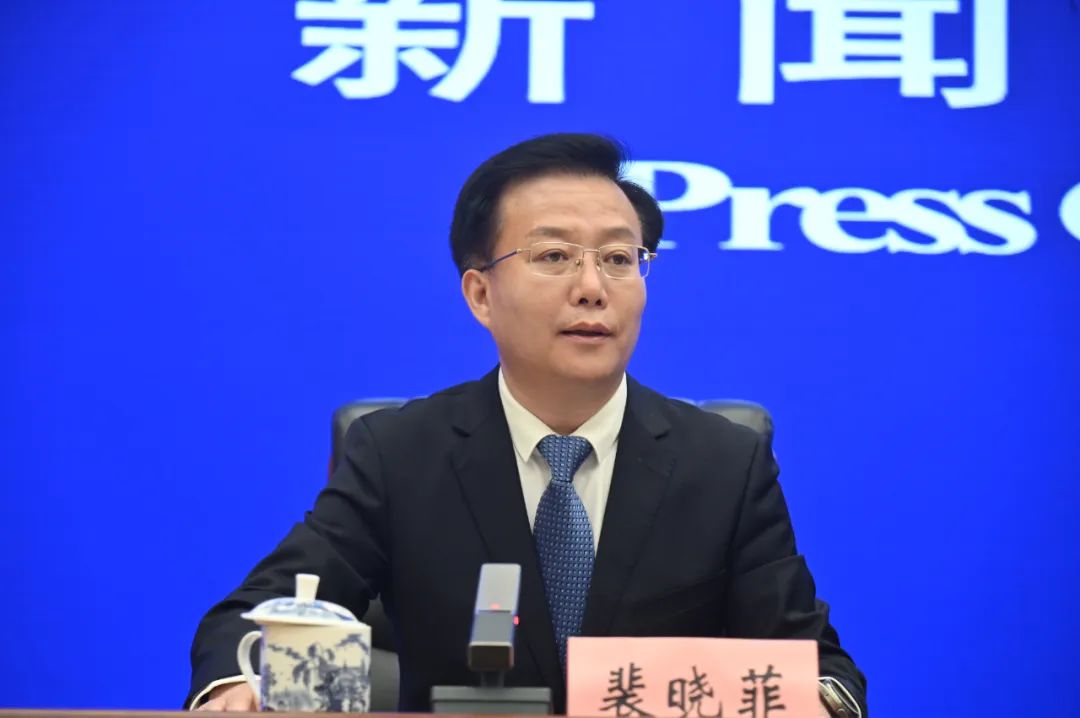
Pei Xiaofei, Director of the Propaganda and Education Department of the Ministry of Ecology and Environment and Spokesperson
Pei Xiaofei: Let's move to the questioning session. The questions at this month's press conference are divided into two sessions: theme questions and hot questions. Among them, in the theme question and answer session, Director Huang Xiaozhan answers questions related to the protection and construction of beautiful rivers and lakes that everyone cares about; in the hot question and answer session, I answer hot questions that everyone cares about.
First, we will enter the theme question and answer session. Before asking questions, please inform the news organization you are working for, and please raise your hands to ask questions.
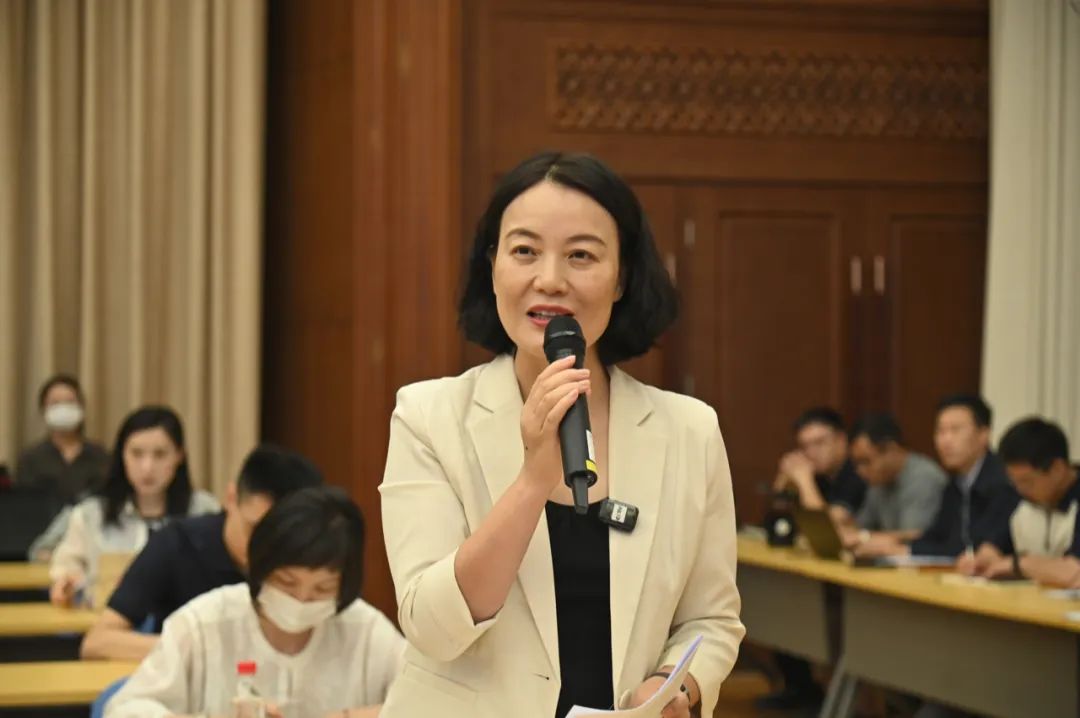
CCTV Social and Legal Channel: Beautiful rivers and lakes are the concentrated expression and important carrier of Beautiful China in the field of water ecology and environment. The opinion on comprehensively promoting the construction of a beautiful China proposes that by 2027, the completion rate of beautiful rivers and lakes should reach about 40%; by 2035, beautiful rivers and lakes with "harmony between people and water" will be basically completed. Please introduce the work progress of the Ministry of Ecology and Environment and what are the considerations for the next step? Thank you.
Huang Xiaozeng: Thank you for your question.
Beautiful rivers and lakes are one of the seven key areas in building a beautiful China. General Secretary Xi Jinping attaches great importance to the protection and construction of beautiful rivers and lakes. The outline of the "14th Five-Year Plan" and the opinions on building a beautiful China have made important arrangements and put forward clear requirements for this.
The Ministry of Ecology and Environment takes the protection and construction of beautiful rivers and lakes as an important starting point, coordinates the management of water resources, water environment, and water ecology, and conducts an in-depth battle to defend clear water. We have mainly carried out the following three aspects of work:
The first is to do a good job in top-level design. What are beautiful rivers and lakes? We have formulated an indicator system for beautiful rivers and lakes, and clarified the connotation requirements of "having rivers and water, fish and grass, and harmony between people and water". At the same time, a national-level "Beautiful Rivers and Lakes Protection and Construction List" was formulated and released, identifying 2573 rivers and lakes, clarifying target requirements and key tasks, covering my country's important ecological functions, sensitive and fragile environment, and high social attention. Mainstreams of major rivers, important tributaries and important lakes and reservoirs. Guide local governments to prepare implementation plans for the protection and construction of beautiful rivers and lakes in their own administrative regions, further extend and expand on the basis of the national list, include small and micro water bodies around the masses into the scope of control, increase governance and protection efforts, and let the masses "push the window to see green, open the door to see the scenery."
The second is to strengthen grassroots innovation. Various localities have combined reality and boldly explored, and a number of good experiences and good practices have emerged. The Ministry of Ecology and Environment organizes and carries out collection activities for excellent cases every year to strengthen promotion and application so that various places can learn from each other and improve. The two batches of excellent cases of beautiful rivers and lakes selected for tree selection have their own characteristics and merits. In terms of ecological and environmental governance, some heroes have broken their wrists and transformed into gorgeous butterflies; in terms of ecological protection and restoration, they have systematically managed and worked hard for a long time, vividly interpreting that "lucid waters and lush mountains are invaluable assets" and providing reference for various places to carry out work. Guidelines, play a leading role in "learning from examples, setting a ruler, demonstrating, and catching up with goals".
The third is to strengthen publicity and promotion. Excellent case experiences and practices were issued and relevant videos were produced. CCTV, the Ministry of Ecology and Environment's "One Internet, One Newspaper, Double Micro", Douyin Platform, etc. promoted and displayed. Relevant reports received more than 6 million clicks, and all sectors of society gave them praise and praised them. In March this year, the Ministry of Ecology and Environment launched the "Collection of Stories" activity for outstanding cases of beautiful rivers and lakes and beautiful bays. The majority of journalists fully explored the touching stories, hard work and responsible actions behind outstanding cases such as Xiamen's Xijiu Lake. Through this "wind collection" activity, the public's awareness, attention and participation in the protection and construction of beautiful rivers and lakes have been significantly improved. "When the people call, I respond", further strengthening our confidence and determination to protect and build beautiful rivers and lakes.
In the next step, the Ministry of Ecology and Environment will further improve and improve policies and measures, increase guidance and support, and guide local governments to adapt measures to local conditions and implement policies systematically, so that each river and lake has its own beauty and share the same beauty. We sincerely welcome friends from the news media to pay attention, publicity and support as always. Let us join hands and work together. The beautiful rivers and lakes with "clear water and green banks, fish flying on the shallow bottom" will surely spread all over the motherland as soon as possible. Thank you.
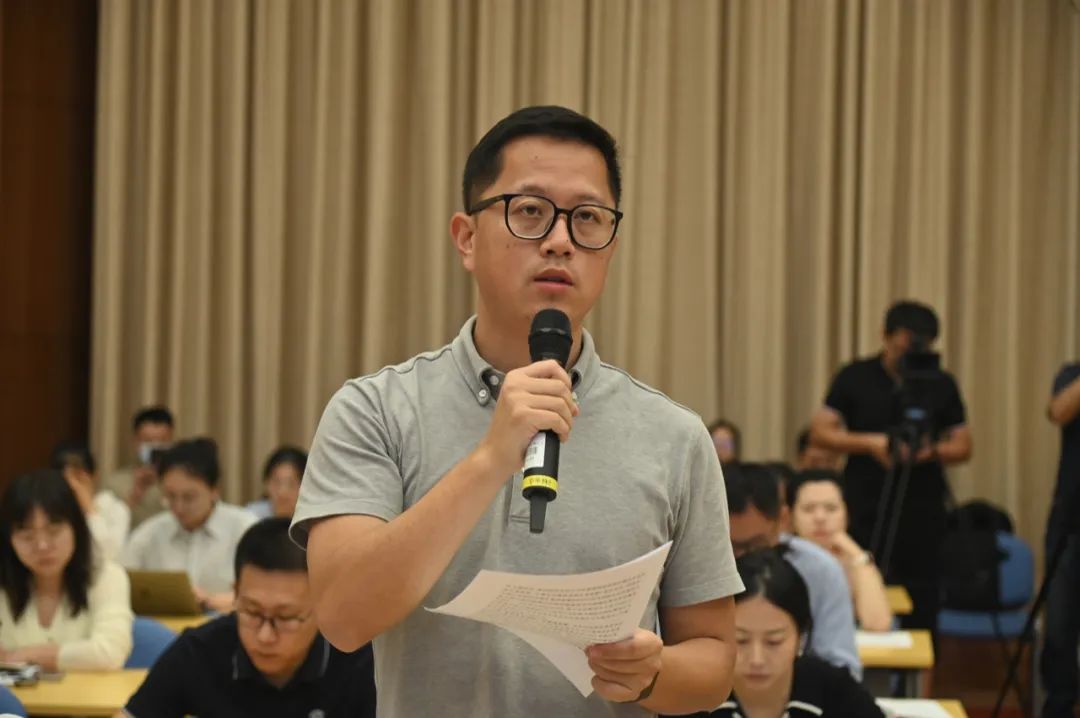
Cover journalist: In March 2023, with the consent of the State Council, the Ministry of Ecology and Environment and other ministries and commissions jointly issued the "Water Ecological and Environmental Protection Plan for Key River Basin." May I ask how has the protection and management of key river basins progressed over the past year? What is the focus of the next step? Thank you.
Huang Xiaozeng: Thank you to this reporter friend. The questions you asked are very meaningful.
The release and implementation of this plan is of great landmark significance, marking that my country's water ecological and environmental protection has entered a new stage of "three waters" overall planning and systematic management. Over the past year, we have worked with relevant departments to keep a close eye on key tasks, establish a linkage mechanism, increase guidance and assistance, and strengthen demonstration and guidance. Important progress has been made in water ecological and environmental protection in key river basins. Here, I would like to inform you of several sets of data.
In 2023, the total chemical oxygen demand and ammonia nitrogen emissions of major water pollutants nationwide will decrease by 2% and 7.1% respectively year-on-year. The proportion of surface water sections with excellent water quality across the country is 89.4%, a year-on-year increase of 1.5 percentage points, which has exceeded the "14th Five-Year Plan" target by 4.4 percentage points. This is the result of the concerted efforts and hard work of all localities, departments and all sectors of society.
In the first half of this year, the overall meteorological conditions were complex and changeable. Under this circumstance, ecological and environmental departments at all levels and relevant localities took precautions in advance and responded effectively. The quality of the national water ecological and environmental environment maintained a momentum of improvement, and the proportion of sections with excellent water quality increased by 1 percentage point year-on-year.
We have mainly focused on three aspects of work.
The first is to highlight key points and overcome difficulties. Pay close attention to the protection of major strategic ecological and environmental issues in the Yangtze River and Yellow River regions, formulate and issue an action plan for tough battles, and clarify a total of 225 key tasks in the fields of comprehensive improvement of the water environment, ecological protection and management of rivers and lakes, and synergy and efficiency improvement of pollution reduction and carbon reduction. Continue to carry out special actions such as the rectification of sewage outlets, the management of black and smelly water bodies, and the protection of water sources. At the same time, we focus on important nodes such as the main stream of the Yangtze River, key sections of the main stream of the Yellow River, and inferior Class V sections of tributaries entering the Yellow River, provide precise management and precise assistance, guide local governments to implement systematic rectification, strengthen source control and pollution interception, and promote local governments to accelerate the completion of environmental infrastructure. Shortboard.
The second is problem-oriented and strengthened guarantees. On the one hand, we promote the implementation of the plan by discovering and solving outstanding problems. The annual key work tasks of the River Basin and Sea Areas Bureau were issued, and the guidance and on-site research on the implementation of river basin planning and key city planning points were organized. In particular, assistance was intensified to areas lagging behind in work, and a total of 260 cities and cities were assisted. Regularly carry out analysis of the national water ecological environment situation, improve the working mechanism for problem discovery and promotion, and implement closed-loop management of problem lists. In the first half of the year, 156 outstanding water ecological and environmental problems discovered were promptly warned and notified to consolidate the main responsibilities of local pollution control. On the other hand, we pay close attention to the implementation of major engineering projects and drive the implementation of key planning tasks to achieve results. The Party Central Committee and the State Council attach great importance to ecological protection in key river basins and continue to increase capital investment. Since the "14th Five-Year Plan", the central government has allocated a total of 89.1 billion yuan in water pollution prevention and control funds to support various localities to vigorously carry out related work such as water pollution prevention and control in river basins, water ecological protection and restoration, and drinking water source protection. More than 3900 key projects have been implemented.
The third is to demonstrate leadership and comprehensively promote it. In 2023, the second batch of outstanding cases of beautiful rivers and lakes will be collected, and a number of outstanding cases will continue to be screened out. A publicity plan has been formulated and a list of cases has been released to show important changes in the ecological and environmental conditions before and after the management of relevant rivers and lakes, so that "there are rivers and water, fish and grass, and harmony between people and water" can be seen, felt and felt. At the same time, various localities learn from each other, introduce policies, strengthen guarantees, and arrange the protection and construction tasks of beautiful rivers and lakes in batches and categories.
In the next step, we will benchmark and comprehensively promote the goals and tasks of building a beautiful China, adhere to systematic thinking, and further promote the planning and implementation of key river basins. Adhere to the overall planning of "three waters", scientifically plan the "15th Five-Year Plan", promote the construction of an ecological and environmental management system integrating upstream and downstream, and comprehensively improve the level of governance and protection in key river basins. Thank you.
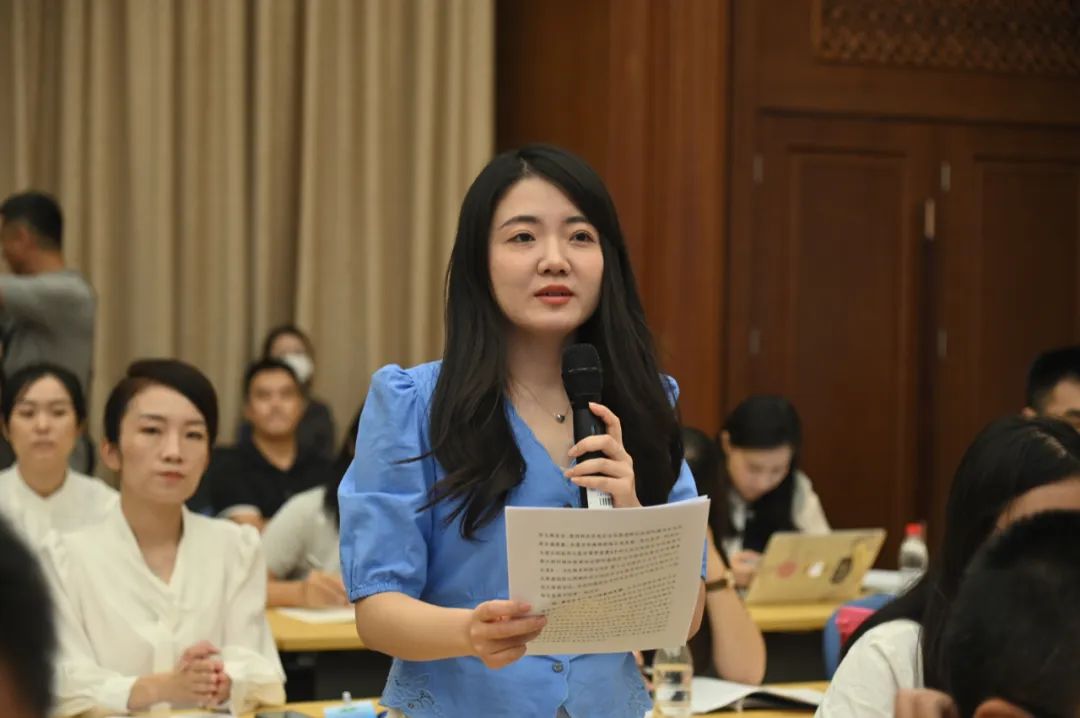
Poster News: In September 2022, 17 departments including the Ministry of Ecology and Environment issued the "Action Plan for In-depth Fight for the Protection and Restoration of the Yangtze River." Currently, the action plan has been implemented halfway. What progress has been made in protecting the Yangtze River and what new results have been achieved? Thank you.
Huang Xiaozeng: I am very happy to answer your questions. The Yangtze River protection is the "greatest thing in the country." Bearing in mind General Secretary Xi Jinping's earnest instructions, the Ministry of Ecology and Environment resolutely shoulders this major political responsibility and persevere in promoting the protection and restoration of the Yangtze River.
17 departments including the Ministry of Ecology and Environment jointly issued an action plan for tough battles, clarifying work goals and detailing specific tasks. Not long ago, our Ministry and the National Development and Reform Commission conducted a mid-term evaluation of the action plan. The results showed that all 12 main goals met the timing requirements, and the overall progress of 123 key tasks was smooth.
First, source control and pollution interception have been further consolidated and deepened. A total of 140,000 kilometers of river shoreline and lake shoreline have been investigated in 11 provinces and cities along the river, and 140,000 sewage outlets into rivers have been found. Urban black and smelly water bodies have been basically eliminated, and the elimination rate of black and smelly water bodies in county-level cities is close to 80%. More than 1300 black and odorous water bodies in large rural areas have been treated. In 1235 industrial parks at the provincial level and above, 1769 sewage treatment facilities have been built.
Second, ecological protection and restoration have been solidly advanced. Carry out pilot water ecological assessment in the Yangtze River Basin, organize annual water ecological monitoring and evaluation, and guide various localities to strengthen water ecological protection and restoration. A "one lake, one policy" work plan has been formulated for sudden large-scale blooms and water ecological imbalances in key lakes and reservoirs, and monitoring and early warning of blooms in key lakes and reservoirs such as Taihu Lake and Chaohu Lake have been strengthened. At the same time, we will fully cooperate with the implementation of the "ten-year fishing ban" in the Yangtze River, strengthen the protection of rare and endemic fish in the upper reaches of the Yangtze River, and promote the improvement of aquatic biodiversity.
Third, the level of green development has been effectively improved. Strengthen the prevention of ecological environment sources, promote the issuance of opinions on strengthening ecological environment zoning control, and delineate more than 16,000 ecological environment control units in provinces and cities along the Yangtze River to "clarify the bottom line and draw boundaries" for high-quality development. Vigorously promote the innovation of the eco-environment-oriented development (EOD) model, cooperate with more than 10 financial institutions such as the China Development Bank, and guide financial funds to accurately support 103 key projects in the battle.
Fourth, environmental risk prevention capabilities have been strengthened. Formulate a standardized construction plan for centralized drinking water sources in cities in the Yangtze River Economic Belt and strengthen environmental risk prevention and control. We have further promoted the investigation and management of potential pollution hazards in tailings ponds, and completed the remediation of a total of 1403 tailings ponds in 11 provinces and cities along the Yangtze River. Deepening joint protection and co-management of river basins, various provinces and cities in the Yangtze River Basin have signed a total of 34 cross-provincial joint prevention and control agreements.
Conscientiously implement the decisions and arrangements of the Party Central Committee and fully support the democratic supervision of ecological and environmental protection in the Yangtze River. The central committees of various democratic parties and non-party personages went deep into the grassroots to conduct investigations and studies, accurately took the pulse, and made suggestions and suggestions, and promoted the resolution of a large number of outstanding water ecological and environmental problems, fully demonstrating the advantages and effectiveness of my country's new political party system.
The water quality of the main stream of the Yangtze River has reached Class II for four consecutive years, with "clear water flowing eastward." In the next step, we will follow the policy of precise pollution control, scientific pollution control, and legal pollution control, maintain the strategic determination of jointly grasping large-scale protection, continue to work hard and for a long time, and provide more solid support for the high-quality development of the Yangtze River Economic Belt. Thank you.
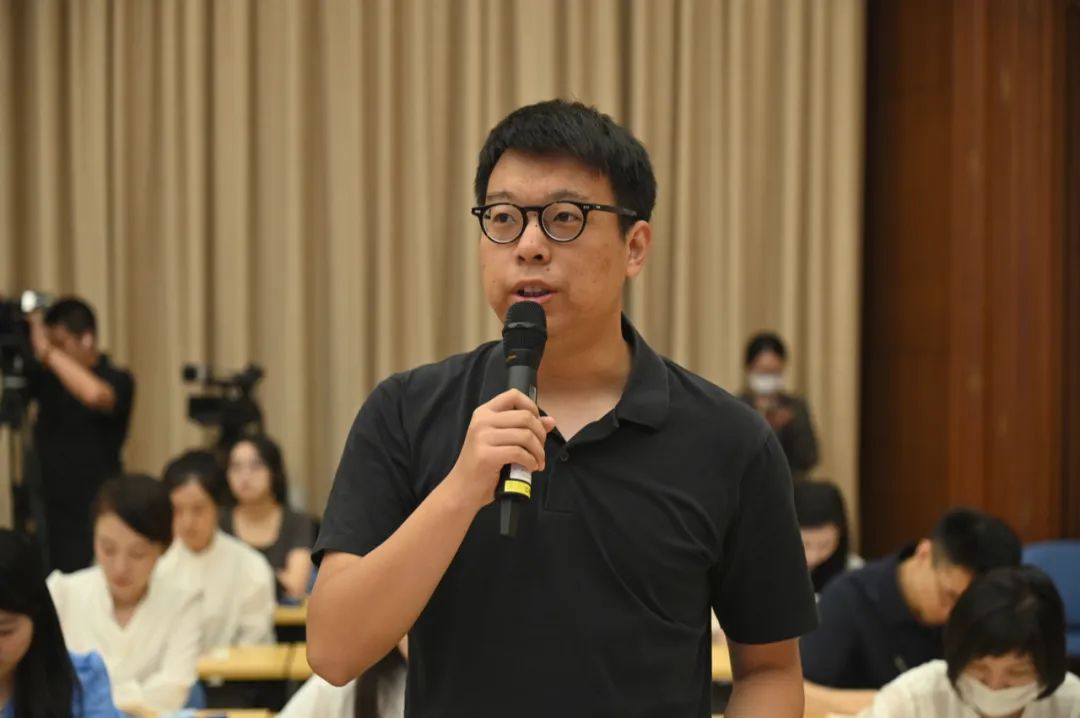
Southern Weekend Reporter: Previously, the Yangtze River Basin carried out a water ecological assessment pilot to guide local governments to speed up the filling of shortcomings in water ecological protection. In June last year, the Ministry of Ecology and Environment, together with relevant departments, issued detailed scoring rules for water ecological assessment indicators in the Yangtze River Basin. How is this work currently progressing? What are the important measures for the next step? Thank you.
Huang Xiaozeng: Thank you to this reporter friend Nanfang Weekend for his questions and thank you for your concern and attention to the water ecology assessment.
This is a major policy and institutional innovation with milestone significance in the history of water ecological and environmental protection. The scoring rules issued last year clarified that pilot water ecological assessment should be carried out in 50 water bodies with important ecological functions and high social attention to determine the assessment base. The first assessment will be carried out in 2025.
The scoring rules establish a 14 indicator system with water ecosystem health as the core and supported by water habitat protection, water environment protection, and water resources security. This indicator system implements the connotation of beautiful rivers and lakes of "rivers and water, fish and grass, and harmony between people and water" to a specific and operational level.
Over the past year, we have worked with relevant departments and local governments to practice through exploration and improve through practice, and have made new and significant progress. The first is comprehensive monitoring and investigation. A total of 331 points have been set up on the main stream of the Yangtze River, main tributaries and key lakes and reservoirs. Water ecological monitoring is carried out twice a year to obtain first-hand data. The second is to comprehensively use technical means such as satellite remote sensing, drones, and ground observation to analyze and judge the water ecological conditions and change trends, discover problems in a timely manner and feed back to local areas, and trace the source and rectify them as soon as possible. The third is to organize technical forces, conduct in-depth front-line research and assistance, analyze the crux behind the problems, and guide local governments to take targeted measures to carry out protection and restoration.
The release and implementation of the scoring rules has played a great role in promoting it, and the effectiveness of water ecological protection has been demonstrated. In 2023, the proportion of sections with excellent water quality in the Yangtze River Economic Belt will be 95.6%, an increase of 1.1 percentage points year-on-year; 227 species of indigenous fish were monitored, an increase of 34 species compared with 2022; 14 species of national key protected aquatic wild animals, an increase of 3 species year-on-year; 30 years later, Coilia nasus once again traced back to the middle reaches of the Yangtze River and the Dongting Lake area; the population of finless porpoises in the Yangtze River rose to 1249, an increase of 23.4% compared with 2017. The beautiful scenery of "finless porpoises blowing on the waves and standing on the sand birds getting idle fish" frequently appears in provinces and cities along the river.
Dear reporters, if you have the opportunity in the future, if you visit these places, you will definitely find many beautiful scenes and feel a sense of happiness and gain.
In the next step, we will continue to conduct water ecological monitoring and evaluation, carry out assessment and trial calculations, and continuously optimize and improve technical methods based on the actual evaluation results to ensure that the assessment results objectively and scientifically reflect the effectiveness of ecological protection and restoration in various places. At the same time, we will summarize and refine experience and practices based on the Yangtze River pilot project, study water ecological monitoring and evaluation methods in national river basins, establish and improve water ecological standards and specifications, and support the construction of an evaluation system for the effectiveness of building a beautiful China. Thank you.
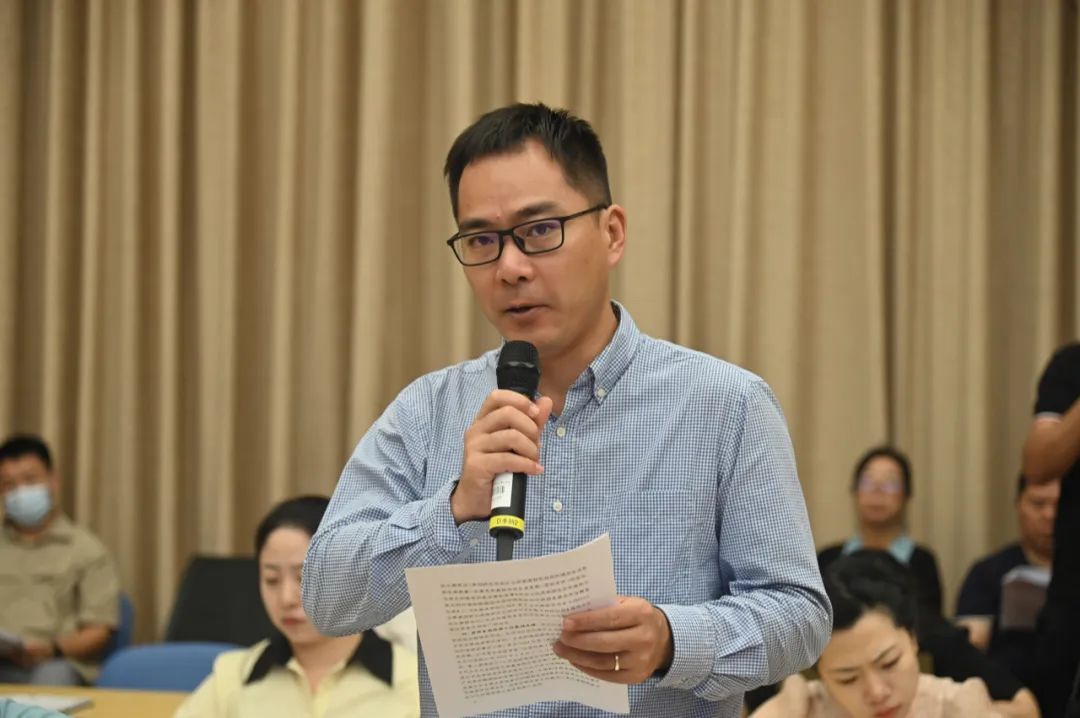
China Daily: The Party Central Committee and the State Council attach great importance to the safety of drinking water sources and regard it as an important part of the in-depth battle against pollution. What work has my country carried out in water source protection, what is the implementation effectiveness, and what is the next step? Consider? Thank you.
Huang Xiaozeng: Thank you for your question. The protection of drinking water sources is related to thousands of households and is closely related to each of us. The Party Central Committee and the State Council have always attached great importance to this work. The Ministry of Ecology and Environment has always placed this work in a prominent position. It has always been uneasy and dare not slack off at all, and resolutely built a strong defense line for drinking water safety.
In recent years, we have mainly carried out the following work around the protection of drinking water sources:
The first is to improve policy and technical specifications. Issued policy documents such as the division of drinking water source protection areas, technical points for environmental protection, and assessment of ecological and environmental conditions, and organized the preparation and revision of technical specifications for the demarcation of protected areas to provide strong support for water source protection and environmental management. Focusing on the protection of water sources in the Yangtze River Economic Belt, a standardized construction work plan was issued this year to further strengthen key tasks such as the establishment of boundary signs in protected areas, environmental risk prevention and control, and long-term mechanism construction to promote the improvement of drinking water safety for people along the Yangtze River. We regard the completion of urban centralized water source water quality targets as an important part of the effectiveness evaluation of the battle against pollution, and consolidate the main responsibilities of local governance and protection.
The second is to strengthen the joint management of urban and rural water sources. Continue to promote special actions for environmental protection of drinking water sources, conduct annual surveys and assessments of basic information and environmental conditions, identify problems and promote solutions. For a small number of water sources whose water quality cannot stably meet the standards, early warning reports will be issued as soon as possible to guide and assist local governments to analyze the causes of the problems, and adopt comprehensive measures such as pollution control and water source replacement to effectively prevent risks. Comprehensively promote the delineation, establishment of standards and investigation and rectification of environmental problems at township level centralized drinking water source protection zones, regularly dispatch and supervise, strengthen technical assistance, and promote the establishment and improvement of a water quality guarantee system from the source to the leader. At present, a total of 24,000 township-level and above centralized drinking water sources across the country have been designated as protected areas, including 19,900 township-level water sources.
The third is to improve drinking water safety capabilities. Issued annual work points, strengthened monitoring and inspections, and ensured the safety of water quality in the South-to-North Water Diversion Project. Issued notices on water environment supervision during flood season and drinking water source environment supervision to guide various localities to accurately identify major pollution sources and various potential water environment risks that affect water quality and drinking water safety during flood season, and promptly trace and rectify them. Formulate and implement a "one lake, one policy" work plan for sudden large-scale bloom and water ecological imbalance in key lakes and reservoirs, urge all localities to strengthen monitoring and supervision, and take effective measures to prevent and control the risk of bloom in water sources.
In the next step, the Ministry of Ecology and Environment will further improve the policy system, technical specifications and management requirements for the protection of drinking water sources, comprehensively promote the standardization of water sources, and effectively improve the level of drinking water safety for the people. Thank you.
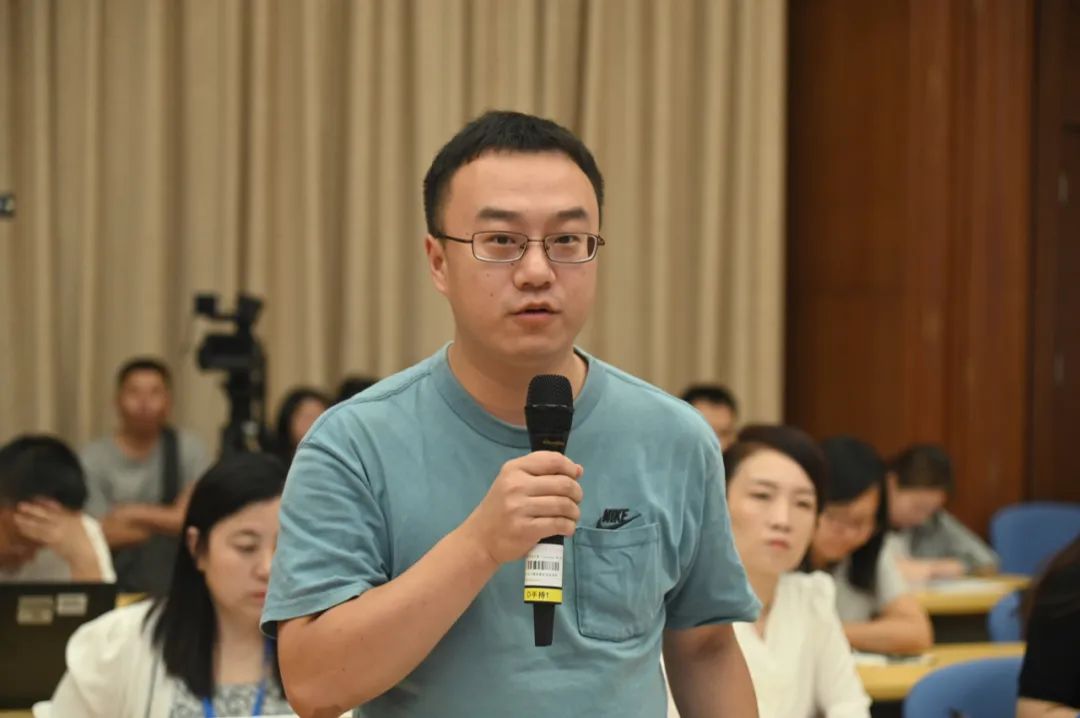
Red Star Journalist: My question is that the investigation and rectification of sewage outlets into rivers is an important basic task in water ecological and environmental protection and an important starting point for promoting the protection and construction of beautiful rivers and lakes. As far as I know, the General Office of the State Council issued relevant documents in 2022. May I ask what progress has been made in this work in the past two years and what are the considerations for the next step of work? Thank you.
Huang Xiaozhe: Thank you for your question. This work is a major basic project for water ecological and environmental protection. It plays an important supporting role in promoting the coordination of land and land, determining banks with water, and protecting and building beautiful rivers and lakes. It needs to be carried out consistently and persevering.
In the more than two years since the document was released, the Ministry of Ecology and Environment, together with relevant departments of the State Council, has conscientiously implemented it, focusing on the following aspects of work.
The first is to improve the institutional system. Vigorously promote the formulation and revision of regulations, standards and policy documents for the supervision and management of sewage outlets, and successively issued 10 technical guidelines including investigation, traceability, rectification, standardization construction, and information collection and transmission of sewage outlets into rivers to guide relevant work in various places. Formulate measures for the supervision and management of sewage outlets into rivers, and make specific provisions on the definition, classification, establishment approval, monitoring and supervision, and information disclosure of sewage outlets into rivers; the measures will soon be released and implemented, providing important institutional support for the supervision and management of sewage outlets.
The second is to comprehensively promote investigation and rectification. Focus on the main streams, major tributaries, and key lakes of important river basins such as the Yangtze River and Yellow River, and carry out a carpet survey. At present, 31 provinces across the country have issued implementation work plans and formulated plans for the hierarchical approval authority division of their administrative regions. All prefecture-level cities have formulated specific plans for the investigation and rectification of sewage outlets to ensure the implementation of this work in detail. The Ministry of Ecology and Environment has organized provincial and river basin bureaus to strengthen verification and spot checks, and has focused on the rectification of various problems through quarterly scheduling, notification feedback, and verification of cancellation working mechanisms. At present, a total of 560,000 kilometers of river and shoreline lines have been inspected across the country, all of which are measured step by step with feet. 290,000 sewage outlets into rivers have been identified, and 195,000 direct and random sewage discharge problems have been promoted to solve. The overall water quality across the country has continued to improve, and the investigation and rectification of sewage outlets have contributed significantly and played a major supporting role.
The third is to optimize service guarantees. Conscientiously implement the relevant requirements of the State Council, further decentralize the approval authority, standardize the approval procedures, issue implementation specifications and service guidelines for the approval of the establishment of sewage outlets, issue a plan for the division of approval authority of the River Basin and Sea Areas Bureau, and provide drawings and tables that are clear at a glance and easy to know and inquire. Vigorously promote one Internet Access Office, so that data can travel more, people can travel less, and make it convenient and beneficial to enterprises. The state has included the standardized construction of sewage outlets into rivers into the scope of central water pollution prevention and control funds and increased support; initially established an informatization platform to meet the informatization and visual management needs of sewage outlets such as "inspection, measurement, traceability, treatment, and management".
Of course, we must also note that while important progress has been made, there are also problems such as uneven progress in investigation and rectification among regions and uneven rectification results.
In the next step, we will follow the decisions and arrangements of the Party Central Committee and the State Council, focus on key areas and important water bodies, further increase the promotion of work, urge and guide various localities to improve the level of pollution interception and pollution control, improve long-term supervision mechanisms, and effectively control the discharge of pollutants entering rivers., to help protect and build beautiful rivers and lakes. Thank you.
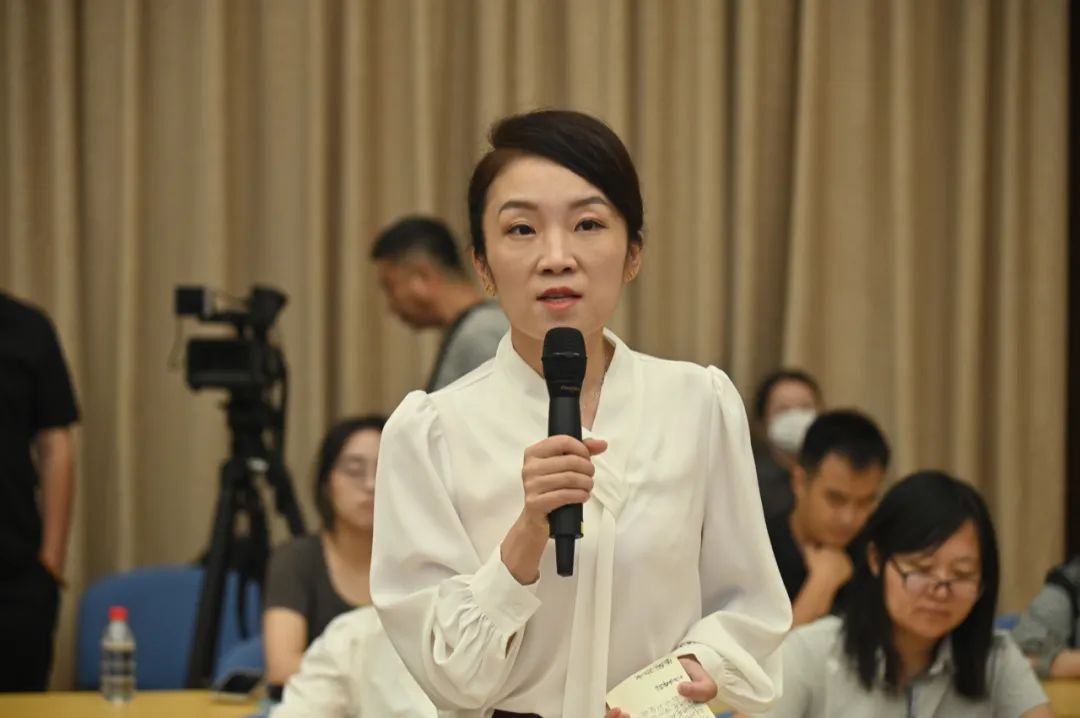
China.com: In March 2022, the "Implementation Plan for In-depth Fight against Urban Black and smelly Water Bodies" proposed that the elimination rate of black and smelly water bodies in built-up areas of county-level cities should reach 80% by 2024 and 90% by 2025. How is the current progress? What work will be focused on next step to ensure the smooth realization of the goals?
Huang Xiaozeng: Thank you for your concern about the management of black and smelly water bodies. Eliminating black and smelly water bodies is a concrete practice of people-centered development thinking. At present, black and smelly water bodies in built-up areas of cities at prefecture level and above across the country have been basically eliminated. The black and smelly water bodies in the past have been treated into beautiful landscapes, improving the quality of the city, improving the living environment, and effectively promoting the high-quality development of the city.
The first is to consolidate the effectiveness of prefecture-level urban governance. Jointly issued the "Implementation Plan for In-depth Fight against Urban Black and Sodorous Water Bodies" and the "14th Five-Year Plan" Action Plan for the Remediation of Urban Black and Sodorous Water Bodies and Environmental Protection ", organize and carry out overall planning and strengthened supervision every year, guide and urge provinces to implement provincial-level environmental protection actions, strengthen monitoring and spot checks, and establish and improve the prevention mechanism of" returning to black and smelly ". As of the end of June, 3033 of the 3082 black and smelly water bodies included in the national control list in cities at prefecture level and above have been managed, accounting for 98.4%, and the results have been further consolidated.
The second is to focus on the management of black and smelly water bodies in county-level cities and counties. Conscientiously implement the "Opinions on Deepening the Battle of Pollution Prevention and Control", expand the scope of governance to county-level cities and counties, organize local governments to conduct comprehensive assessments, establish dynamic supervision lists, and formulate systematic rectification plans. In the first half of the year, the elimination rate of black and smelly water bodies in county-level cities exceeded 70%, of which nearly 80% was in the Yangtze River Basin. Guide seven eastern provinces including Hebei, Jiangsu, Zhejiang, Fujian, Shandong, Guangdong, and Hainan to take the lead in carrying out the management of black and smelly water bodies in built-up areas of counties, issue policy documents, strengthen technical guidance, and require that black and smelly water bodies in counties be basically eliminated by 2025. At present, various tasks are advancing in an orderly manner.
The third is to strengthen guidance and assistance. Further improve the departmental collaboration mechanism, strengthen information sharing, jointly carry out open and secret inspections, and promptly report back to local rectification and implementation when problems are discovered. Organize various river basin bureaus to conduct spot checks on the effectiveness of rectification, and promote the resolution of problems such as imperfect long-term mechanisms and inadequate daily supervision. Make full use of technologies such as big data, satellite remote sensing and drones to discover problems in a timely manner, increase technical assistance to key areas, and discuss countermeasures and measures.
In the next step, we will continue to carry out environmental protection actions to rectify urban black and smelly water bodies and consolidate the main responsibilities of governance. Strengthen information disclosure, urge local governments to regularly announce work progress, and protect the public's right to know and supervise. Friends from the news media are welcome to pay more attention to this work, publicize good practices and good results, expose negative examples and bad behaviors, and vigorously create a good atmosphere for everyone to pay attention to the water environment, prevent water pollution, and protect water ecology, so as to contribute to the protection and construction of beautiful rivers and lakes. Thank you all.
Pei Xiaofei: Next, we will enter the hot question and answer session.
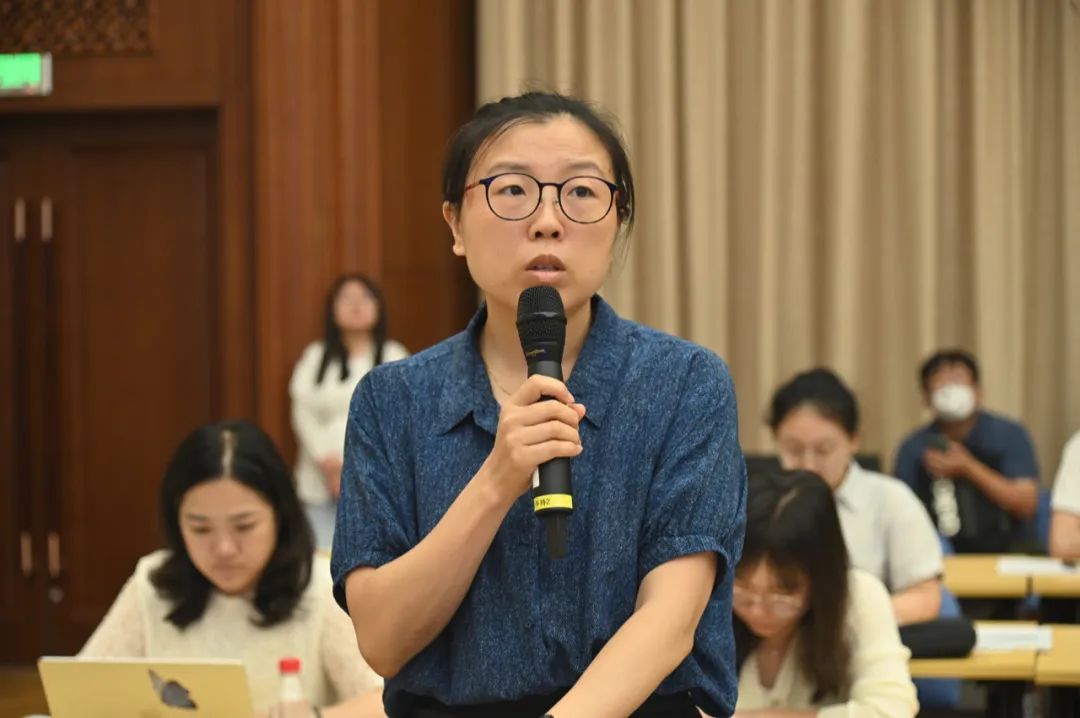
Xinhua Agency reporter: It is understood that in recent years, complaints related to noise pollution in my country have increased year by year. Noise pollution is receiving more and more social attention and has become an important environmental issue related to the vital interests of every common person. May I ask what work has been carried out by the ecological environment and other departments in protecting people's sound and environmental rights and interests, and what are the plans for the next step?
Pei Xiaofei: Thank you for your question.
With the development of the economy and the acceleration of urbanization, noise pollution has increasingly become a widespread concern in society and has become a prominent shortcoming that restricts the construction of ecological civilization and the construction of a beautiful China. In 2023, the 12345 government service convenience hotline and the ecological environment, public security, housing and urban and rural construction departments in cities at prefecture level and above across the country accepted a total of approximately 5.706 million noise complaints and reports, an increase of 1.203 million over the previous year. Noise nuisance accounted for 61.3% of the complaints and reports received by the National Ecological Environment Letters, Complaints and Reports Management Platform, ranking first among all environmental pollution factors. It can be seen from the above figures that noise pollution has become the most concerned environmental issue for the people.
General Secretary Xi Jinping emphasized at last year's National Ecological and Environmental Protection Conference that great efforts must be made to solve problems such as noise at people's doorsteps and actively respond to the concerns of the people. In order to protect the people's sound and environmental rights and interests and enhance the people's sense of gain from a tranquil environment, our Ministry, together with relevant departments, has mainly carried out the following work.
The first is to improve the supervision system. The "14th Five-Year Plan for the Prevention and Control of Noise Pollution" was issued jointly with 15 departments, which systematically planned the main goals, tasks and measures for noise pollution prevention and control during the "14th Five-Year Plan" period, and accelerated the promotion of local governments to clarify the division of management functions of industry, construction, transportation, and social life. About one-third of cities at prefecture level and above have completed the division of labor. Guide various localities to carry out the delineation of acoustic environment functional areas. In 2023, for the first time, full coverage of acoustic environment functional areas in 338 cities at prefecture level and above (excluding Sansha City) and 1822 county-level cities across the country will be achieved. In addition, all 338 cities at prefecture level and above across the country have completed the assessment of the division of sound environment functional areas, effectively laying a solid foundation for noise pollution prevention and management.
The second is to innovate management methods. Promote the automation of noise monitoring. In 2023, 36 municipalities directly under the Central Government, provincial capital cities, and cities separately listed in the plan will basically complete the verification of automatic monitoring points for acoustic environment quality in functional areas and the networking of system construction. Promote the management of industrial noise emission permits and gradually promote the inclusion of noise from 280,000 industrial enterprises in the management of emission permits. Currently, about 120,000 have been completed. Full coverage of industrial noise emission permits will be achieved by the end of the "14th Five-Year Plan". In-depth study of the "Pujiang Experience" and carry out key supervision on typical cases that have strong complaints from the masses. Currently, 60 cases in 6 batches have been supervised at the national level, involving 30 provinces and benefiting more than 30,000 people. At the same time, since the beginning of this year, various provincial ecological and environment departments have also established a supervision mechanism for typical cases of noise complaints, and more than 300 cases have been supervised.
The third is to explore social co-governance. We have organized cities such as Tianjin, Shanghai, Chongqing, Hangzhou, Kunming, Xiamen, and Jiaxing to carry out pilot creation of quiet communities to promote the joint management of noise problems by owners, properties, and merchants. So far, more than 1700 quiet communities have been created across the country; In conjunction with the education department, we have continued to organize the "Green Examination Protection" campaign for many years. During the middle school entrance examination and college entrance examination, we have guided all sectors of society to consciously reduce noise-producing behaviors by issuing proposals, open letters and other methods, benefiting more than 30 million candidates annually; Promote "silent carriages" and set up "silent carriages" on 92 trains on the Beijing-Shanghai, Beijing-Guangzhou, Beijing-Harbin, Chengdu-Chongqing, Shanghai-Kunming, Guinan and other lines.
In the next step, the Ministry of Ecology and Environment will urge all localities to complete the division of departmental functions as soon as possible and gradually solve the problem of unclear noise pollution management functions; continue to carry out supervision on typical cases of noise complaints and promote the solution of noise disturbing people at their doorsteps; and guide all localities to do a good job in functional areas. The construction of automatic monitoring stations for acoustic environment quality will ensure that all construction of more than 3800 automatic monitoring stations in 338 cities at prefecture level and above across the country will be completed before the end of this year; Continue to promote the construction of quiet communities and the application of noise maps to continuously improve the people's sense of gain of a quiet sound environment.
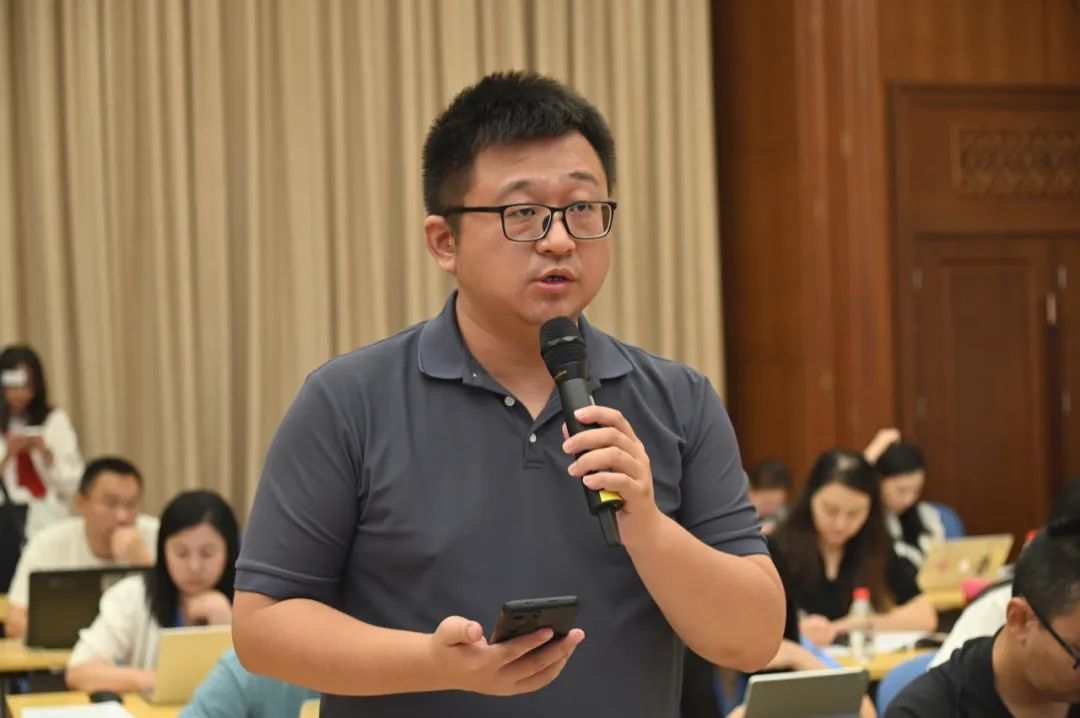
Daily Economic News Reporter: Recently, the Ministry of Ecology and Environment reviewed and approved the "National Carbon Emissions Trading Power Generation Industry Quota Total and Allocation Plan for 2023 and 2024". What changes have been made to the new plan? In addition, some industry insiders said that under the new carry-over policy, the release of a large number of quotas in the market may increase fluctuations in carbon prices. How does the Ministry of Ecology and Environment evaluate this?
Pei Xiaofei: Thank you for your question.
In accordance with the decisions and arrangements of the Party Central Committee and the State Council, our Ministry has actively promoted the construction of the national carbon emissions trading market. Since July 2021, the power generation industry has launched online trading, and has successfully completed two performance cycles. At present, our Ministry is taking the lead in carrying out work related to the third compliance cycle. In accordance with the overall requirements of "seeking progress while maintaining stability, serving the overall situation, and encouraging advanced", we have compiled the "National Carbon Emissions Trading Power Generation Industry Quota Total and Allocation Plan".
The "Plan" combines the requirements of the new work situation and the opinions and suggestions of all parties to optimize and adjust the following aspects.
The first is to optimize the performance schedule. Change from one performance in two years to one performance in one year. The first two performance cycles of the national carbon market are both biennially compliant. This "Plan" sets the performance deadlines for 2023 and 2024 at the end of 2024 and the end of 2025 respectively, achieving performance once a year, alleviating the problem of cluster transactions, and enhancing market activity.
The second is to adjust the caliber of statistical accounting. In order to prevent data quality risks from the source and improve the scientificity and rationality of the quota allocation method, the "Plan" has made improvements in several aspects such as adjusting the basic parameters of quota calculation, optimizing the scope of control, and simplifying and optimizing various correction coefficients.
Third, the carbon emission benchmark value under comparable standards has been slightly tightened. Taking into account factors such as the progress of completing the national carbon emission intensity target during the "14th Five-Year Plan", the benchmark carbon emission values in 2023 and 2024 will drop by about 1%. This method can not only maintain certain pressure on emission reduction, but also ensure smooth operation of the market within the limits of enterprises.
On this basis, in order to effectively solve the problems of reluctance to sell enterprises with quota surplus, inactive market transactions, and high pressure on enterprises with quota deficit to perform, we proposed quotas on the basis of in-depth research and fully drawing on mature experience in domestic and foreign carbon markets. Carry over measures. In fact, only companies with surplus quotas need to carry forward quotas. They need to sell a certain proportion of surplus quotas for 2024 and previous years before they can carry forward the remaining part as quotas for 2025 for continued use. It is estimated that under the current carry-over measures, enterprises with surplus quotas will be encouraged to gradually release quotas to the market that are roughly equivalent to their performance needs, so as to better balance market supply and demand. In addition, the carry-over deadline is set at December 31, 2025, allowing companies enough time to formulate trading plans to avoid clusters of transactions in the short term, which will cause abnormal fluctuations in carbon prices.
In the next step, we will strengthen market management, closely track key emission unit trading activities, jointly do a good job in risk management, and maintain the healthy and orderly development of the carbon emissions trading market.
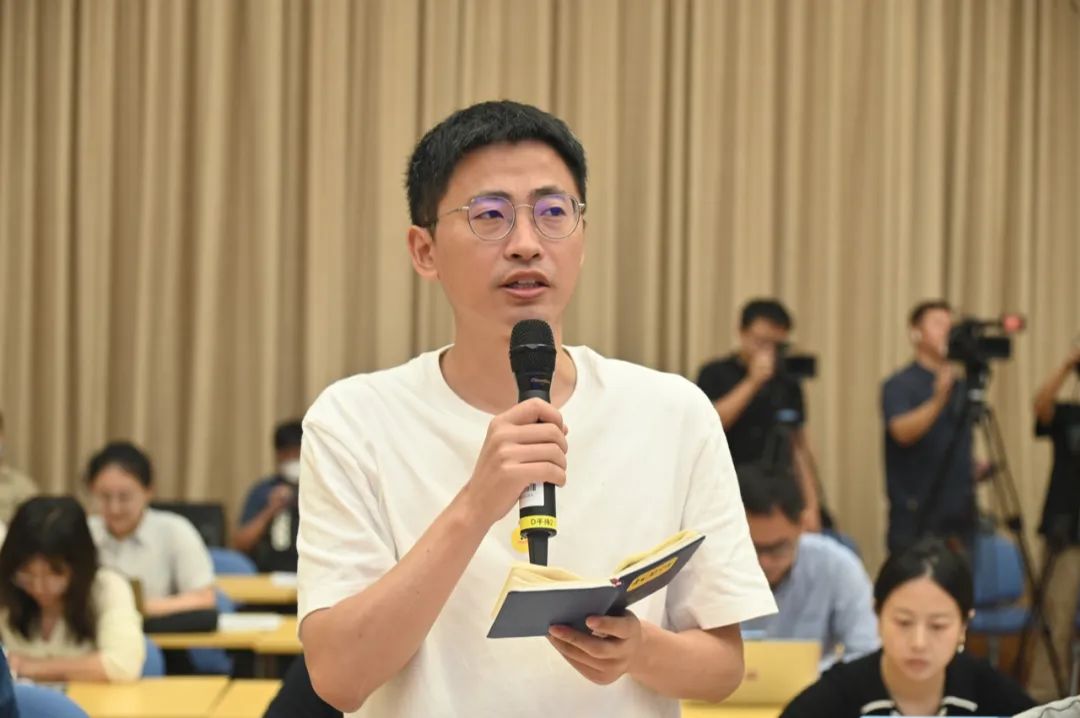
New Yellow River Reporter: We have noticed that the Ministry of Ecology and Environment recently announced the 18th batch of typical cases of ecological and environmental law enforcement, and once again exposed a number of third-party testing agencies that have engaged in fraud. May I ask, what are the new characteristics and new changes in such cases in recent years, why are they repeated prohibitions, and what further work arrangements are there in joint law enforcement and special rectification?
Pei Xiaofei: Thank you for your question.
In recent years, as my country's ecological and environmental protection work continues to increase, the third-party environmental protection service industry has developed rapidly. Some third-party organizations have resorted to fraud in violation of professional ethics and laws and regulations for economic interests, disrupting the order of the environmental protection service market. Analysis of the cases investigated and dealt with in recent years, third-party environmental protection service agencies show diversified, concealed and professional characteristics. For example, unauthorized reduction of sampling points, insufficient monitoring duration, false signature, committing crimes in other places, after being punished, change the name and re-register, change the "vest", and even use some technical means to enter the environmental monitoring system to change the internal parameters of the industrial computer, interfere with pollutant monitoring results, etc.
The Ministry of Ecology and Environment has always adhered to a "zero tolerance" attitude to crack down on counterfeiting. Since the "14th Five-Year Plan", we have worked with the Supreme Law, the Supreme People's Procuratorate, the Ministry of Public Security, and the State Administration for Market Regulation to address the issue of counterfeiting by third-party environmental protection service agencies for four consecutive years. Carry out special rectification and continue to maintain a high-pressure situation.
First, a number of typical cases were investigated and dealt with. As of the end of last year, a total of 2260 third-party environmental service agencies that committed illegal activities had been investigated and dealt with, 457 typical cases had been publicly exposed, and 193 cases had been transferred to criminal cases. In addition, we also investigated and dealt with 4255 fraud cases involving enterprises in self-monitoring, and transferred 930 suspected illegal and criminal cases to relevant departments, which served as a deterrent and warning.
The second is to establish a joint law enforcement mechanism. Our Ministry, together with the Supreme People's Procuratorate and the Ministry of Public Security, has built a joint law enforcement mechanism that connects and promotes executions in an integrated manner, forming a "combination fist" of joint consultation, joint listing and supervision, joint announcement of typical cases, and joint deployment of relevant work, effectively improving The effectiveness of supervision and law enforcement has solved the problems of difficulty in filing, obtaining evidence, and identifying the nature of EIA fraud cases in the past.
The third is to further improve the legal system. The Supreme People's Procuratorate and the Supreme Law's revision have issued the "Two Supreme People's Procuratorate" judicial interpretations, clarifying the conviction and sentencing standards for third-party environmental protection service agencies to provide false supporting documents in the process of environmental impact assessment, environmental monitoring, and carbon emission inspection and testing. The "Interim Regulations on the Administration of Carbon Emissions Trading" issued by the State Council severely punish institutions and persons in charge of falsifying carbon emission data, and revoke their qualifications for practicing if the circumstances are serious. These systems have strengthened our regulatory basis for third-party environmental service agencies.
This year, our Ministry will continue to work with the Supreme Law, the Supreme People's Procuratorate, the Ministry of Public Security, and the State Administration for Market Regulation to jointly deploy and carry out in-depth special rectification actions against fraud by third-party environmental protection service agencies, and continue to maintain a high-pressure posture. Compared with previous years, there are the following changes:
First, the scope of the field is wider. While continuing to crack down on fraud by third-party agencies in the two major areas of environmental impact assessment and monitoring, we will also severely investigate and punish third-party fraud and illegal activities in the fields of independent acceptance of environmental protection on completion of construction projects, motor vehicle emission inspection, and quality management of greenhouse gas emission data.
The second is to continuously increase penalties. We require all localities to conduct a review of the rectifications of third-party institutions investigated and dealt with in accordance with the law in recent years, and to severely punish those who still have fraudulent behavior in accordance with the law and regulations, especially those who "have received more than two administrative penalties for providing false supporting documents within two years, and who have provided false supporting documents" and other consistent with the transfer of suspected crimes, criminal transfers shall be made in a timely manner.
The third is to continue to improve the synergy of supervision. Continue to give full play to the collaborative advantages of multiple departments, and make good use of means such as project supervision, hierarchical investigation, and joint listing supervision to form a stronger regulatory synergy and improve the efficiency and effectiveness of the crackdown. At the same time, we will strengthen traceability crackdowns and impose penalties in accordance with relevant laws and regulations on third-party organizations that have violated laws and regulations and upstream and downstream related enterprises and units discovered by extended expansion.
The fourth is to comprehensively upgrade regulatory means. Further strengthen the "penetrating" supervision of big data and artificial intelligence, and use the power of technology to build a strong defense line against fraud. Use on-site rapid monitoring equipment, data analysis technology and other means to improve the ability to discover and investigate problems.
Finally, we also welcome the news media and all sectors of society to give full play to the advantages of public opinion supervision and mass supervision to provide us with clues on relevant issues in a timely manner, and everyone will work together to promote the healthy and orderly development of the third-party environmental protection service market.
Thank you to Director Huang Xiaozhan and thank you to all reporters and friends for your participation. Today's press conference ends here. goodbye







